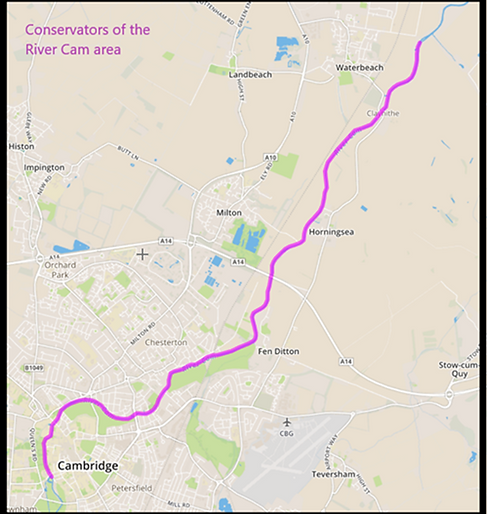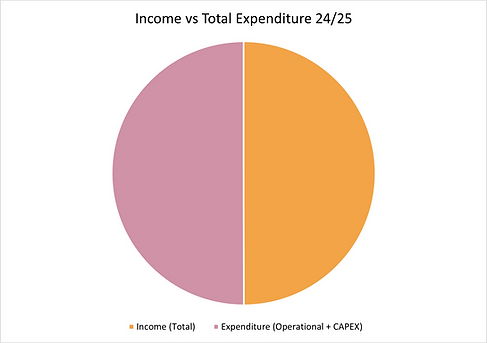

CONSERVATORS OF THE RIVER CAM
 |  |  |  |  |  |
|---|---|---|---|---|---|
 |  |
What is the Conservancy and Who are the Conservators?
The Conservators of the River Cam is an organisation designated a Body Corporate, and has been created by an Act of Parliament which governs the remit and financing of the organisation. Thirteen Conservators are appointed by a combination of organisations with day to day administrative and operational management carried out by the officers. The original Act was obtained on 27th February 1702, which established the Conservators as a legal body with the powers to collect tolls in order to maintain the river.
The Conservancy, regulated by Acts of Parliament, principally the River Cam Navigation Act 1851 and the River Cam Conservancy Act 1922, is also empowered to make Byelaws to regulate the River. The relevant legislative background can be found on the links below.
Interesting Fact: The Conservancy is not a Local Authority, it is not a Trust or Charity, it is not a VAT registered company and can only invest in property or guilts, it is not for profit.

Interesting Fact: The Conservancy receives no subsidy from tax payers, or from the City, District or County Councils nor the Environment Agency or University. Its income is limited by the Acts and generated through the fees it charges for registrations and consents and none of it is guaranteed.
The Conservators themselves are appointed for a 3 year term, and the Cycle of appointments takes place on consecutive years for different appointing bodies. For example, Cambridge City Council made their 3 year appointments in January 2025, the Environment Agency and Cambridgeshire County Council will make their appointments in January 2026, and the University will make their appointments in January 2027.
Their role is voluntary, and they do not receive any income for their appointment, which can be very time consuming for those who take on roles of responsibility, such as the Chair.
Interesting Fact: The Conservancy is the landowner of the towpath and the surrounding land to the river bank, between Clayhithe and Chesterton in Cambridge. The Conservancy owns the towpath but has a Permissive Path Agreement with Cambridgeshire County Council that makes them responsible for provision and maintenance of the actual path, and the surrounding shrub and grass maintenance however, the riverbanks and 900+ trees are also Conservancy responsibility with no direct income to fund it, therefore land works are supported by boaters registration fees.

Conservators 2025
Cambridge University
David Goode (Fr) (Chair)
G Greenfield
Vacancy
Cambridge City Council
N Gough
D Levien
A Wilson
S Tovell
Vacancy x 3
Cambridgeshire County Council
A Bradnam (Cllr)
Environment Agency
S Judge
Vacancy
Interesting Fact: The Conservancy undertakes a full audit in accordance with International standards of Auditing, with financial statements prepared under UK GAAP (FRS 102). This costs the Conservancy in excess of £25k per year, using over 60 hours of staff time over a number of weeks.

CONSERVANCY FINANCE (based on 2024/25 FY)
Conservancy Income:
-
80% from boat registration fees.
-
13% from other fees including events & from works consents.
-
4% from other sources of income
-
3% from investment income.
Conservancy Expenditure:
-
30% on labour and related costs
-
27% on waterway, towpath & tree management
-
22% on capital infrastructure and related costs
-
15% on running costs
-
6% expenditure on additional vessel, vehicle and plant costs.
Breakdown of boat registration income:
-
56% from Commercial Vessels (including Punts)
-
22% from privately owned powered vessels
-
13% from rowing vessels
-
7% from other vessels
-
2% debts relating to unpaid registration fees

Interesting to know:
-
The majority of boat registrations each year are of Rowing craft, at 65% of all registrations, which represents only 13% of boat registration fees.
-
The majority of registration fee income each year, is from Commercial boat fees at 56%, however this only represents 15% of boats registered each year.
